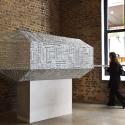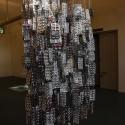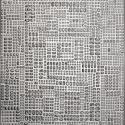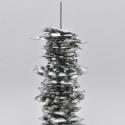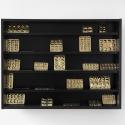Discipline
Conceptual
Installation
Material
Brick/Concrete/Plaster
Ceramic/Clay
Found Objects
Metal (other)
Region
London
Biography
Poojan says, 'as we navigate the world of packaging, it navigates us'. In this sense, the act of discarding a pharmaceutical blister pack is tied to larger questions about everyday human existence. For example, polyethylene terephthalate (PVC) pill packets are not recyclable, they end up in countless landfill sites throughout the UK. She finds herself responding to this environmental emergency, not through direct action, but as an artist who engages creatively with the quantity of medical waste we produce every day. She has been experimenting with discarded medicine packets in various mediums since 2019, thus she collects discarded empty packets not just from pharmacies and hospitals, but also from domestic waste produced routinely by herself, her relatives, and her friends.
And it is her own culture's daily use of ritual and sacred offerings which suggests to her that, when handled meaningfully, these disposable packets take on a significance of their own. Something is intuited. There are aesthetic and ethical qualities that exceed ordinary functions and human control. She believes it is the contact between her skin and the damaged plastic that generates an enhanced form of attention. Consequently, the punctured and buckled surfaces of blister packs have become her primary sculptural medium, and it is the sensation of touch that focuses and motivates her work.
She transforms these tactile experiences into a visual arts language using a version of Marvin Minsky’s 'frame theory': ‘by changing the context in which something is represented, its meaning and our response to it also change’ (1975). With this idea in mind, she has developed a way of making empty medicine packets sculpturally ‘strange’ through recontextualization in gallery exhibitions. She focuses on how the routines of everyday pill-taking are intensified when reflected within the frame of contemporary art and strives to make her studio experiments visually striking. Ultimately, she wants to create a contemporary vision of consumer society's intense relationship with medication.
